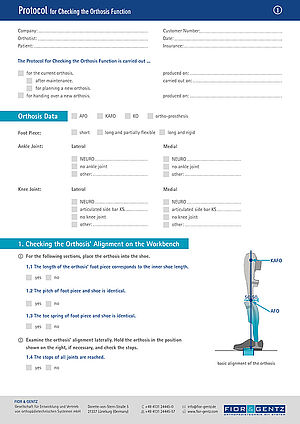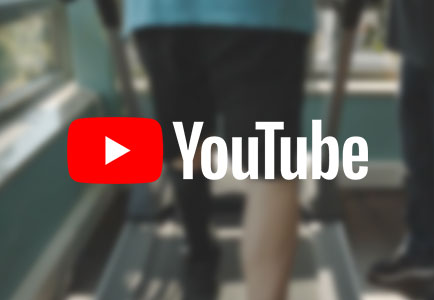Results Analysis including Documentation
- Physical Exam
- Planning the Orthosis
- Model Technique
- Handing Over the Orthosis
- Maintenance
- Products in the Spotlight
- Downloads
Protocol for Checking the Orthosis Function
FIOR & GENTZ
Gesellschaft für Entwicklung und Vertrieb von orthopädietechnischen Systemen mbH
Dorette-von-Stern-Straße 5
D-21337 Lüneburg
Tel.: +49 4131 24445-0
Fax: +49 4131 24445-57
E-Mail: info(at)fior-gentz.de
Beratung und Technischer Support
Results Analysis including Documentation
After having produced the final orthosis, the orthotist will hand it over to the patient. Together with the patient the orthotist checks if the orthosis' alignment, function and comfort are ensured. If necessary, it will be adapted and adjusted.
The Protocol for Checking the Orthosis Function serves as guideline and documentation. Print the protocol and use it for the fitting of the orthosis. This way, you will be able to compare the state after fitting to changes in the future.
-
Checking the Alignment on the Workbench
-
Step 1/7
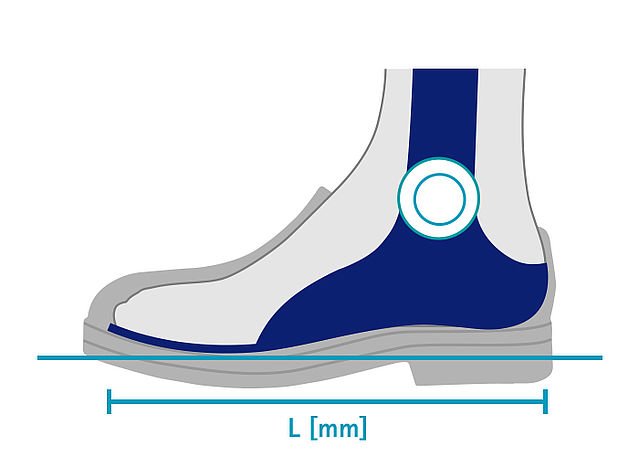
Foot Piece
Check if the length of the orthosis’ foot piece corresponds to the inner shoe length.Step 2/7
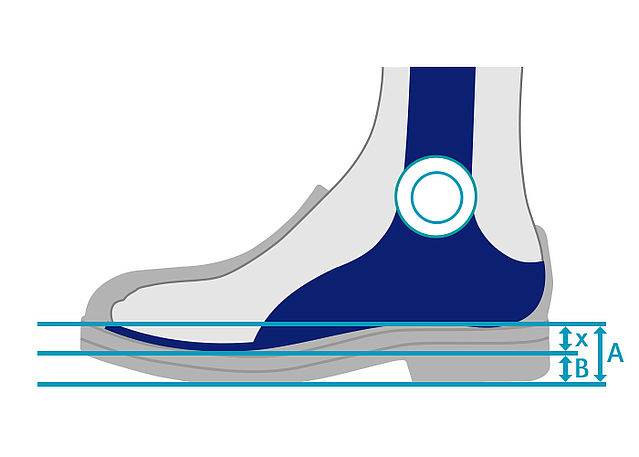
Pitch
Check if the pitch of foot piece and shoe is identical.Step 3/7
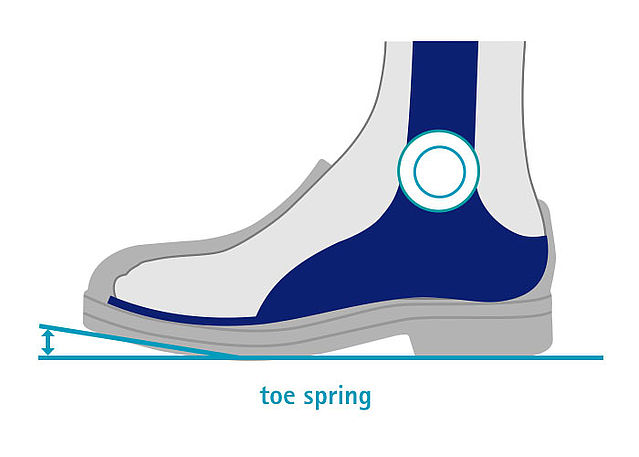
Toe Spring
Check if the toe spring of foot piece and shoe is identical.Step 4/7
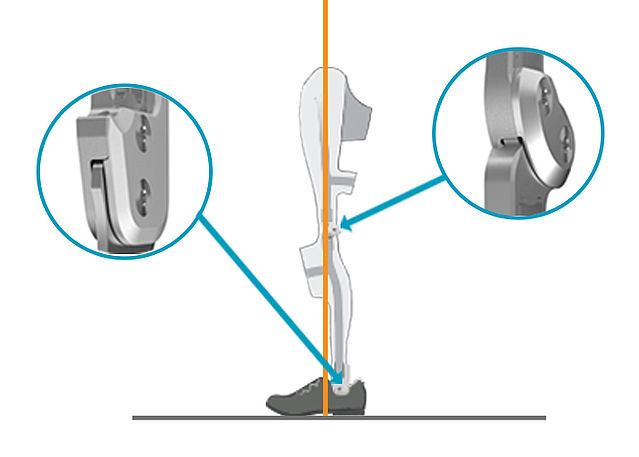
Stops
Check if the stops of all joints are reached when the orthosis is placed standing in the shoe.Step 5/7
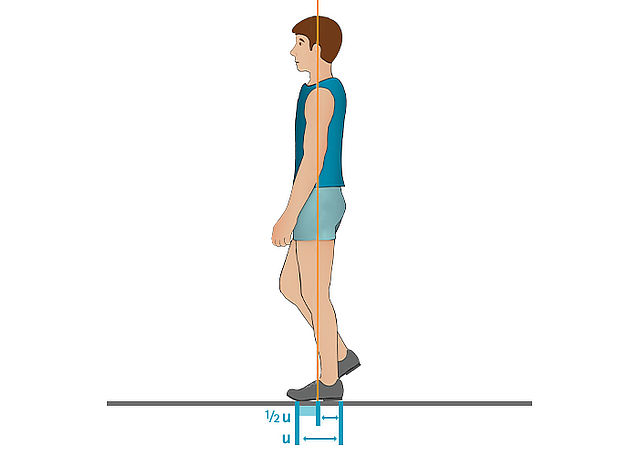
Ideal Line of Gravity at the Foot
Check the line of gravity in the following steps. It should fall through the front half of the supportive area. The supportive area extends from the rolling-off area to the heel lever.Step 6/7
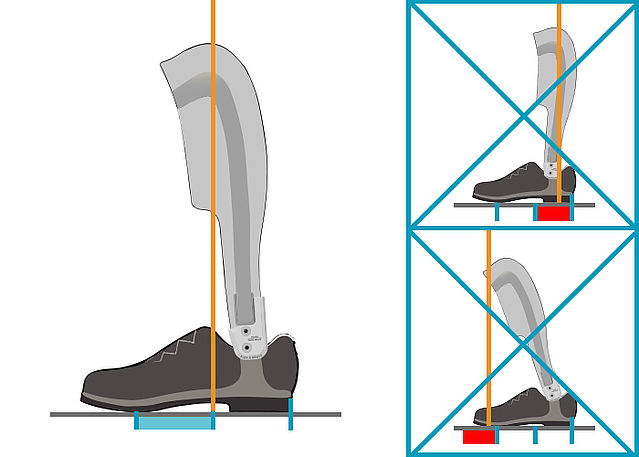
Ideal Line of Gravity at the Foot
AFO: Drop the line of gravity through the middle of the ap measurement at the knee. The line of gravity should fall through the front half of the supportive area, as otherwise it is not possible for the orthosis side to carry the load.Step 7/7
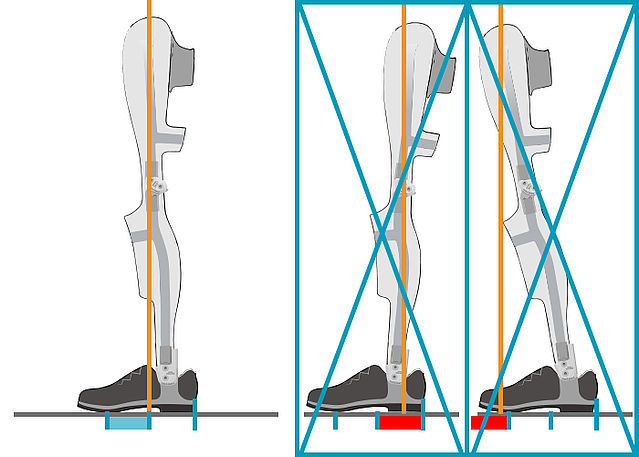
Ideal Line of Gravity at the Foot
KAFO: Drop the line of gravity through the trochanter major. The line of gravity should fall through the front half of the supportive area, as otherwise it is not possible for the orthosis side to carry the load.






-
Checking the Alignment on the Patient: Static
-
Step 1/13
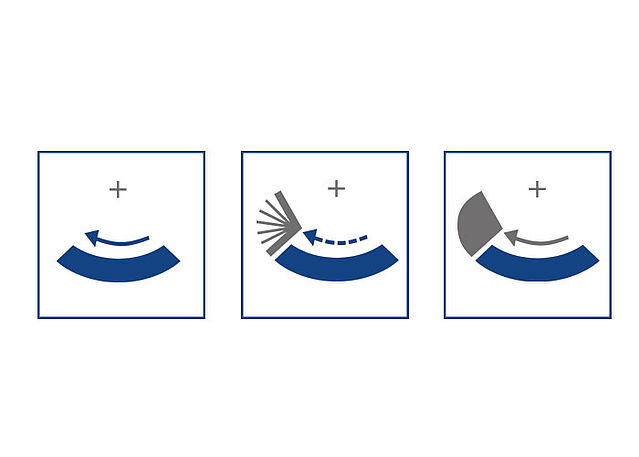
Dorsiflexion Stop
Check if a dorsiflexion stop is recommended according to the configuration result.Step 2/13
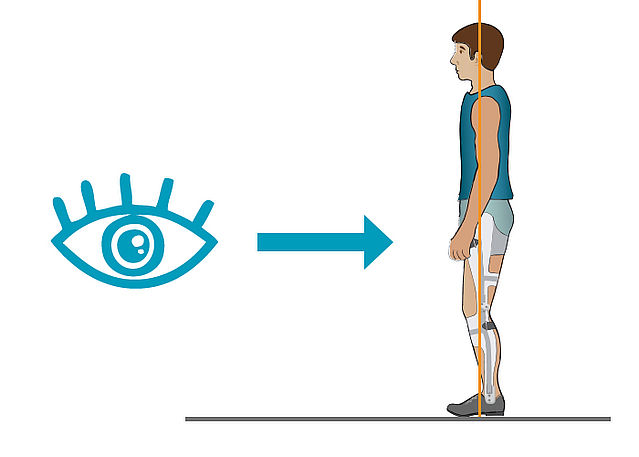
Stance Analysis
Explain if and how you performed a visual stance analysis and decide if you can continue checking the orthosis function.Step 3/13
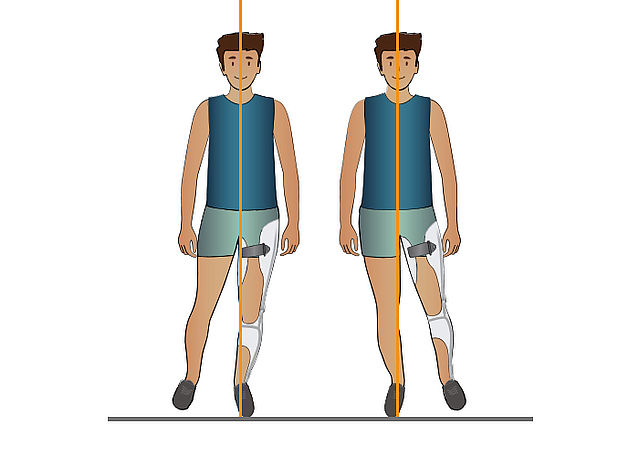
Weight Shift
Check if a weight shift from one leg to the other is possible. If that is not the case, you cannot start checking the alignment dynamically, as the patient is not able to walk like this.Step 4/13
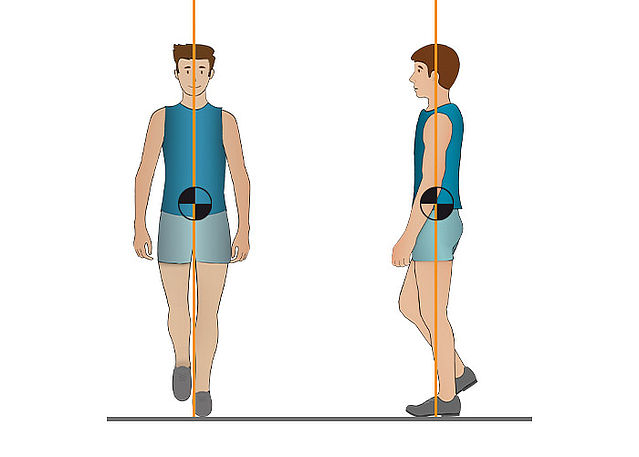
Body’s Centre of Gravity
For the following steps, you need to know where to position the body’s centre of gravity. A pressure measuring plate provides an accurate result. If you do not have one, you can assume that the body’s centre of gravity is somewhere below the navel and viewed sagitally in the middle between the abdominal wall and the back. Medical devices can be used in all cases for standing.Step 5/13
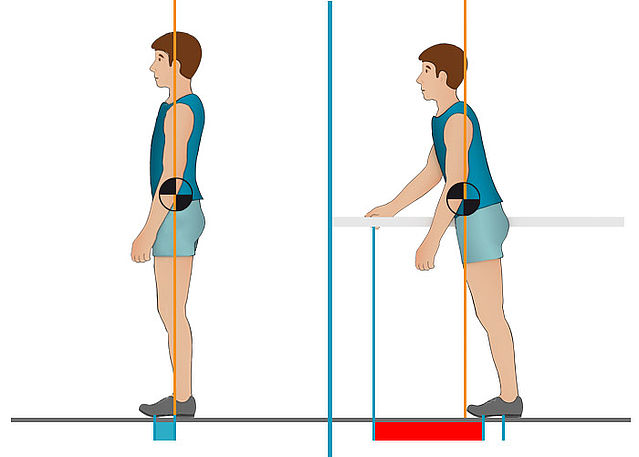
Line of Gravity
Drop a line of gravity starting at the body's centre of gravity. The line of gravity must fall into the area shown in the picture in order for the patient to stand safely. If this is the case, you can continue checking the orthosis function.Step 6/13
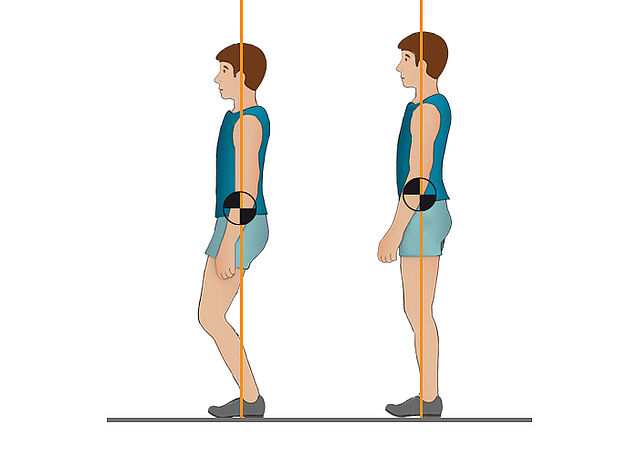
Joint Angle: < 90°
Check if the patient is able to stand and if the line of gravity falls through the front half of the supportive area. Then, check the angles of the shank to the floor and the shank to the thigh. If the shank-to-floor angle is smaller than 90°, write down which one of the two positions shown in the picture applies.Step 7/13
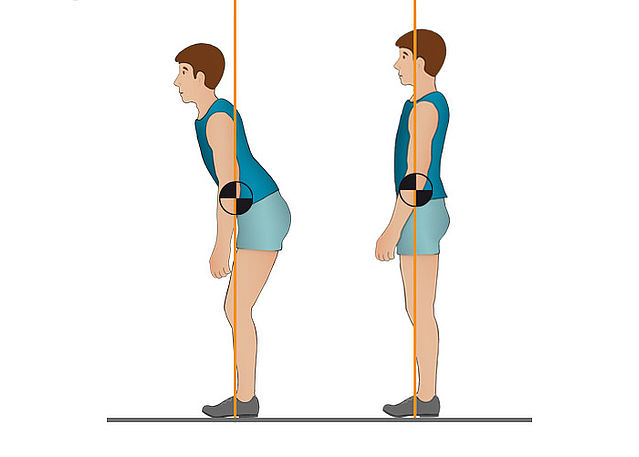
Joint Angle: = 90°
If the shank-to-floor angle is 90°, write down which one of the two positions shown in the picture applies.Step 8/13
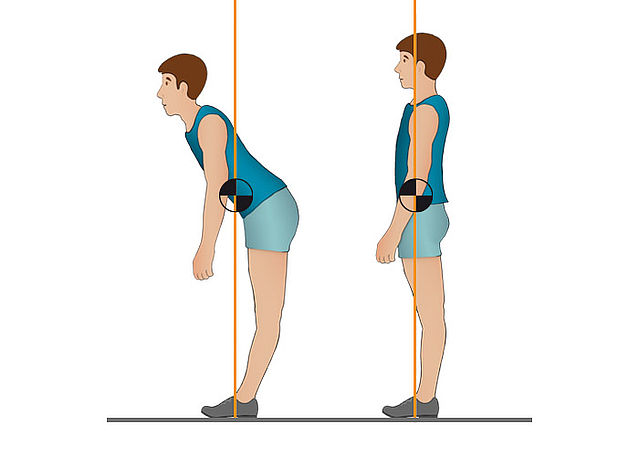
Joint Angle: > 90°
If the shank-to-floor angle is larger than 90°, write down which one of the two positions shown in the picture applies.Step 9/13
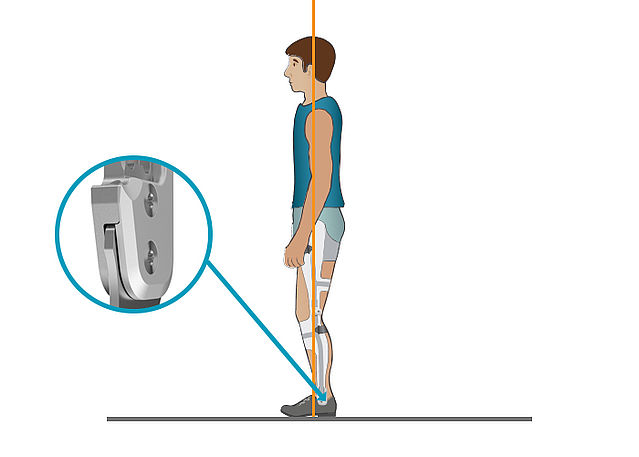
Dorsiflexion Stop
Check if the dorsiflexion stop is reached (exception: It has been removed or the orthosis is a KO).Step 10/13
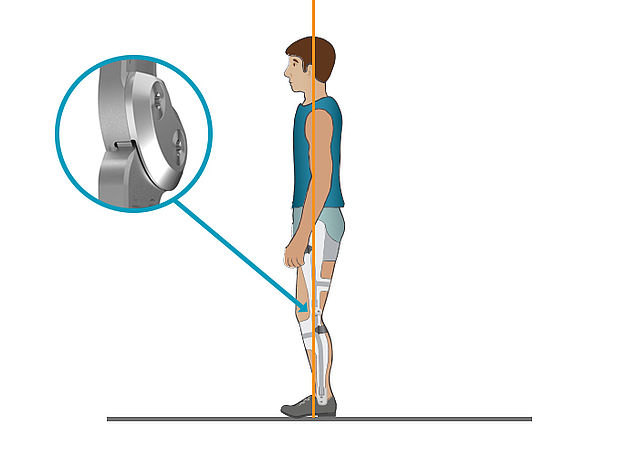
Extension Stop
If one or two joints are mounted at knee height, check if the extension stop is reached. If there are two joints, both extension stops must be reached without causing any twisting of the orthosis.Step 11/13
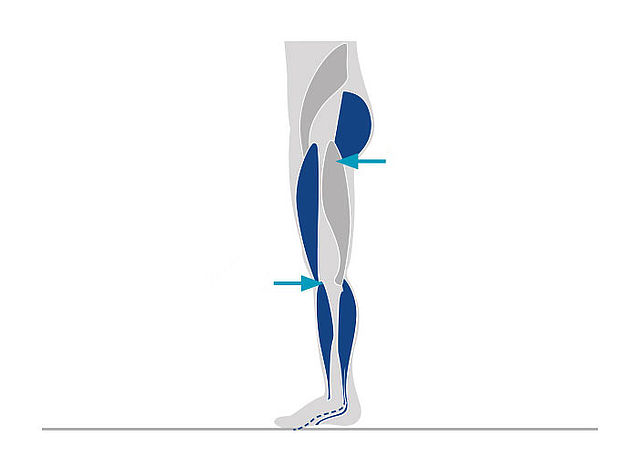
Maximum Lever Lengths
Check if the maximum lever lengths were reached:- tibial shell at AFO and KAFO: directly below the patella, as far up as possible
- femoral shell at a KAFO: ca. two fingers below the gluteal fold
Step 12/13
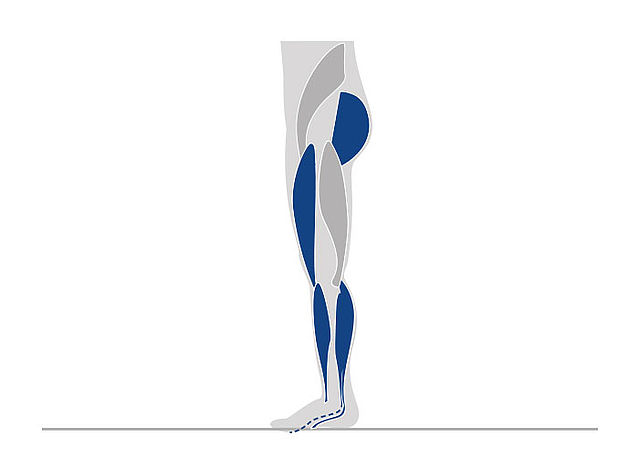
Space for Muscle Activity
Check if the functioning muscles have sufficient space for activity. If shells or fasteners are too tight, the muscles cannot extend and reach their full functionality.Step 13/13
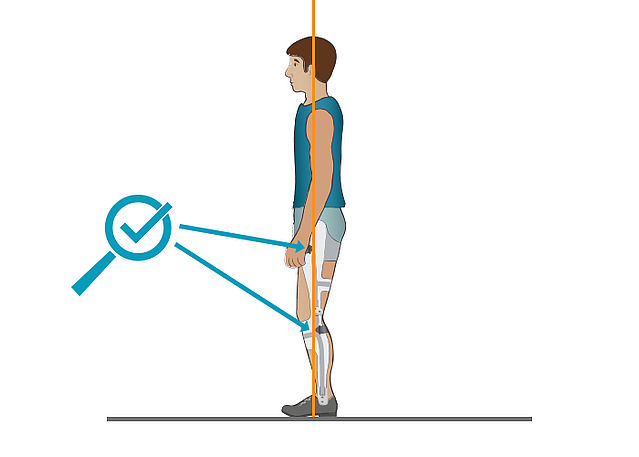
Fasteners
Check the fasteners with the patient standing in their individual normal posture. Fasteners should prevent the orthosis from shifting while walking or the shells from hinging down. They also fix possibly necessary covers to shells. Fasteners cannot guarantee an equal load distribution and are therefore not suited to carry the load.












-
Checking the Alignment on the Patient: Dynamic
-
Step 1/12
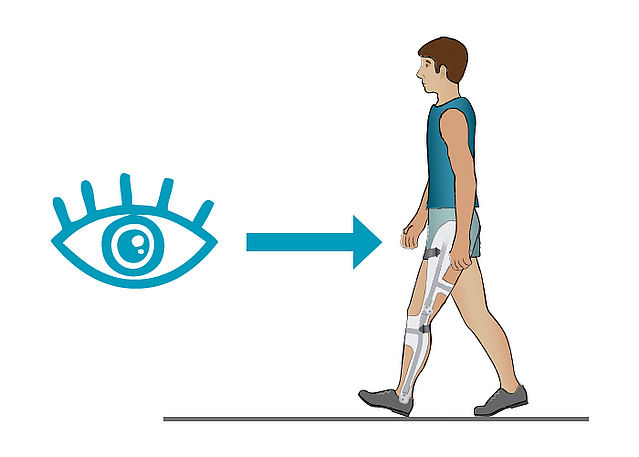
Perform a visual gait analysis and document it. Write down if medical devices were employed. If a gait analysis is not possible, write down the reason and resolve the problem. Then, start checking the orthosis function again from the beginning. For checking the alignment dynamically, always examine several step processes.
Step 2/12
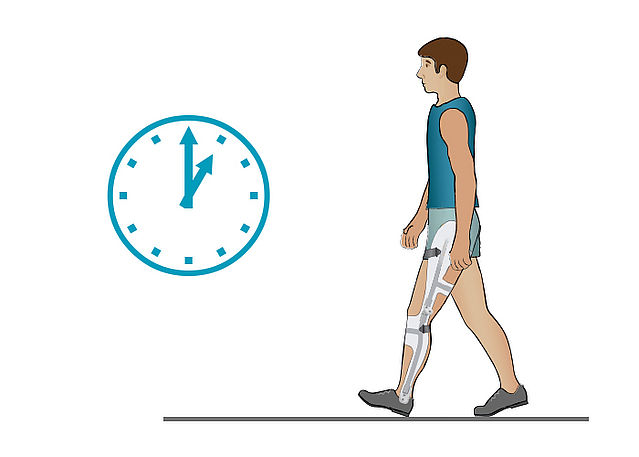
Load Duration
Check if the load duration on both legs is the same. If it is not, you will notice a limp, although the step length can still be identical.Step 3/12
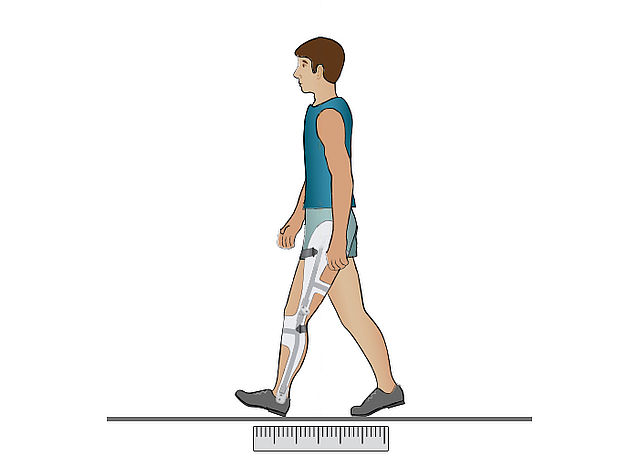
Step Length
Check if the step length of both legs is the same. If it is not, the step process on one side is often incomplete.Step 4/12
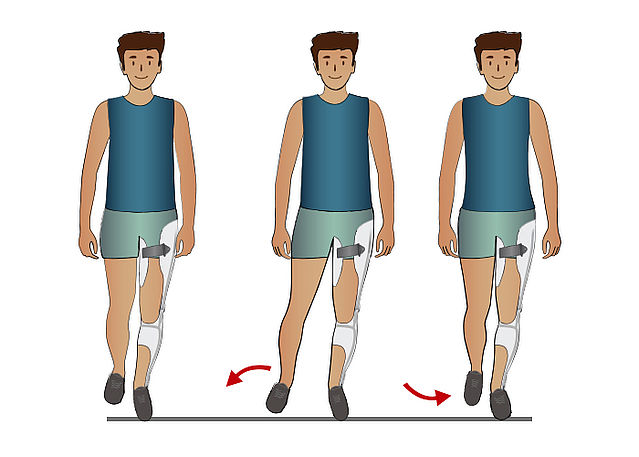
Compensatory Mechanisms
If you note a circumduction of the leg or a lifting on the contralateral side in order to be able to swing freely, a compensatory mechanism is taking place. Write down if one/several is/are existing.Step 5/12
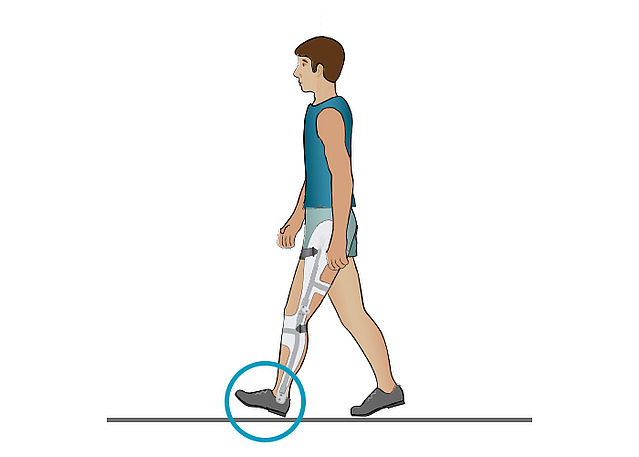
Initial Contact: Foot
Check from the side if and how often the patient touches the floor with the heel first.Step 6/12
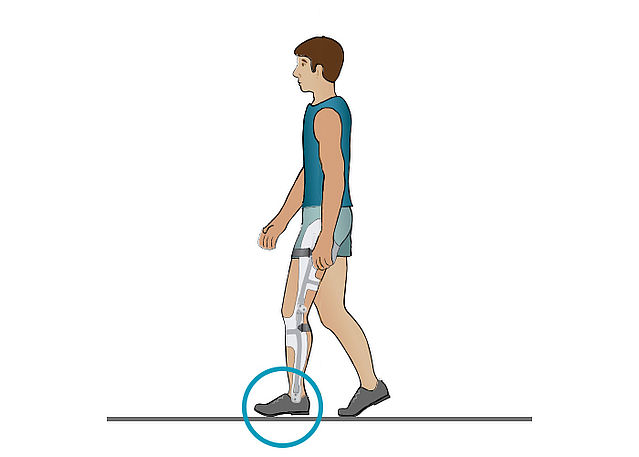
Loading Response: Foot
Check if and how often a (passive) plantar flexion occurs.Step 7/12
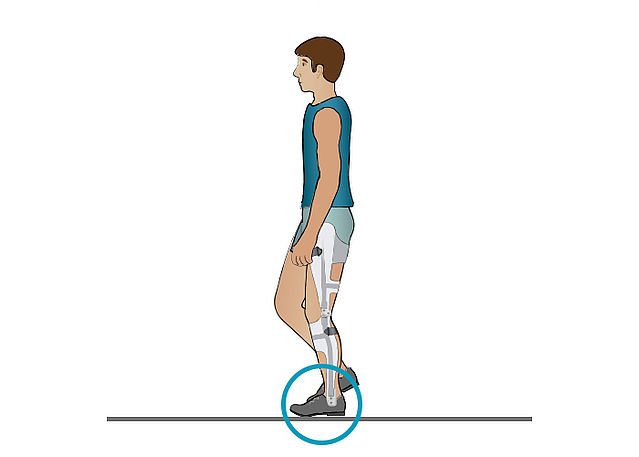
Mid Stance: Foot
Check if and how often the foot contact is complete.Step 8/12
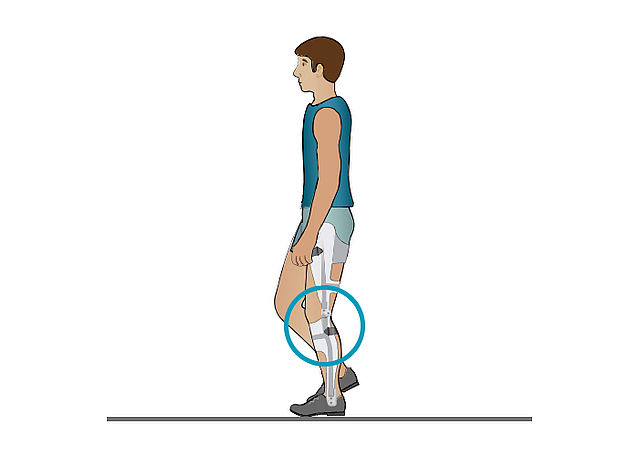
Mid Stance: Knee
Check if the knee joint is flexed or hyperextended. If it is flexed, write down the angle.Step 9/12
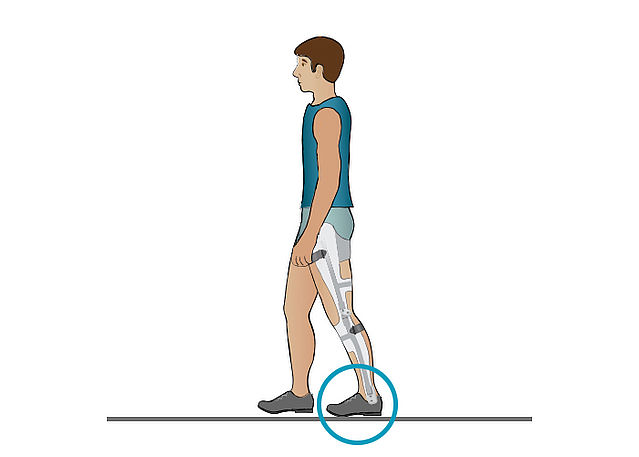
Late Mid Stance: Foot
Check if and how often a dorsiflexion occurs. A dorsiflexion can only take place if no static dorsiflexion stop was mounted.Step 10/12
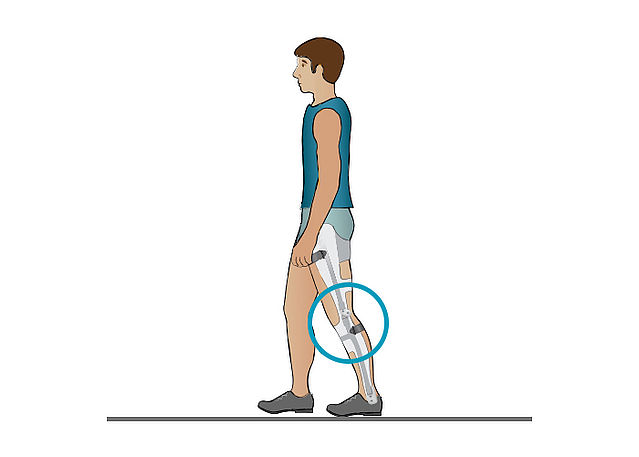
Late Mid Stance: Knee
Check if the knee joint is flexed or hyperextended. If it is flexed, write down the angle.Step 11/12
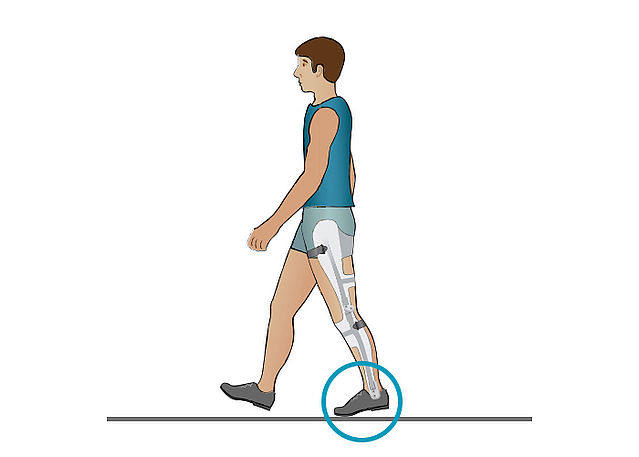
Terminal Stance: Foot
Check if and how often the heel lifts significantly from the ground. The heel should also lift significantly from the ground if the patient has height compensations and no ankle joints.Step 12/12
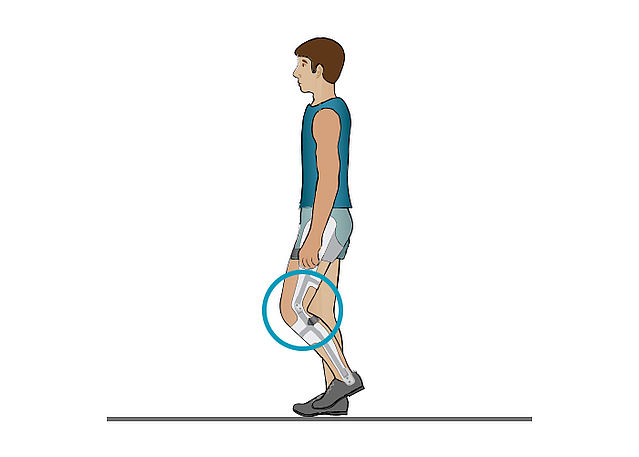
Initial Swing: Knee
Check if and how often a flexion movement occurs in the knee joint. If there is one, write down the flexion angle.











Last Update: 20 February 2020
FIOR & GENTZ
Gesellschaft für Entwicklung und Vertrieb von orthopädietechnischen Systemen mbH
Dorette-von-Stern-Straße 5
D-21337 Lüneburg
Tel.: +49 4131 24445-0
Fax: +49 4131 24445-57
E-Mail: info(at)fior-gentz.de
Beratung und Technischer Support
